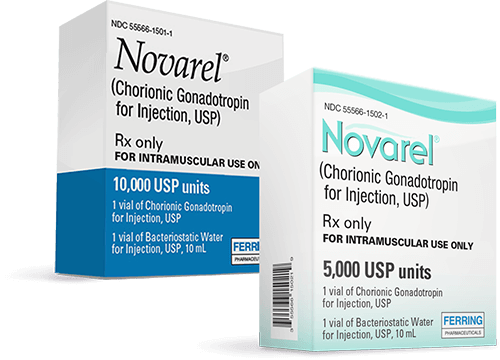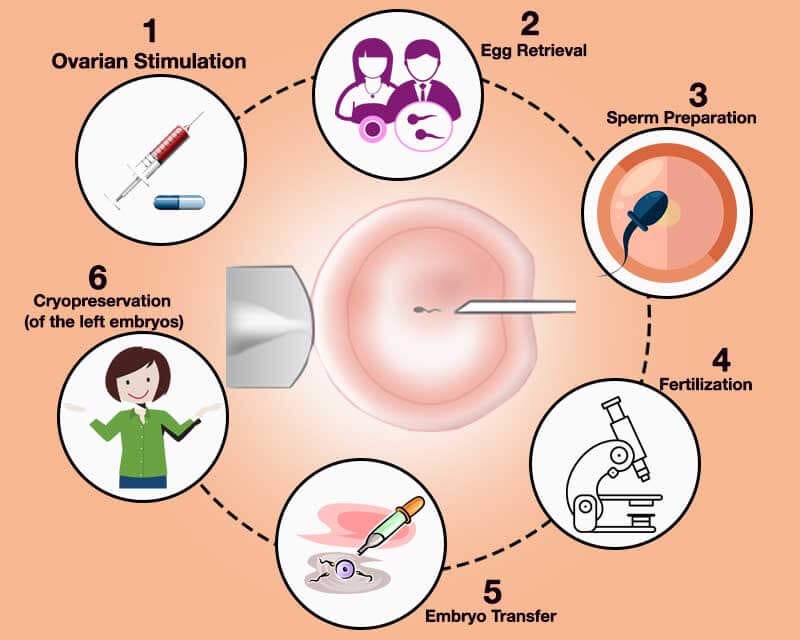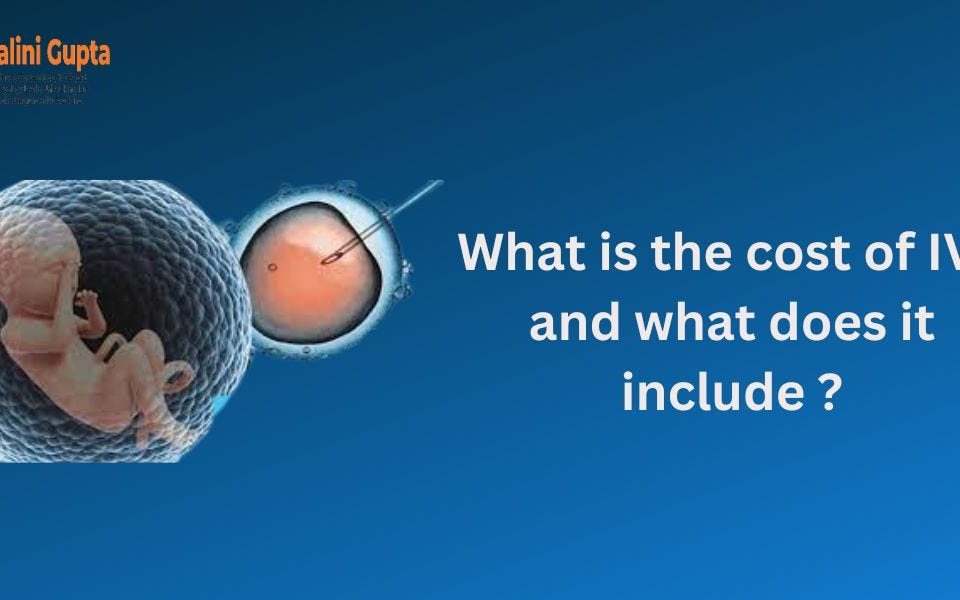
Did Tim Walz Use IVF? Unpacking the Facts, Myths, and What It Means for You
April 27, 2025
Does Insurance Pay for IVF? Your Guide to Coverage, Costs, and Options
April 27, 2025Does Donald Trump Support IVF? A Deep Dive into His Stance, Policies, and What It Means for You
When it comes to in vitro fertilization (IVF), a topic that touches the lives of millions of Americans hoping to build their families, people want clear answers—especially from someone as influential as Donald Trump. As a former president and a key political figure, his views on IVF carry weight. But what does he really think? Does he support it, oppose it, or sit somewhere in between? If you’re curious about where Trump stands—and what that could mean for your access to fertility treatments—this article is for you. We’ll unpack his statements, actions, and the bigger picture, going beyond the headlines to give you a full, honest look.
IVF isn’t just a medical procedure; it’s a lifeline for many. About 1 in 7 couples in the U.S. struggle with infertility, and over 85,000 babies were born through IVF in 2021 alone, according to the Department of Health and Human Services. With costs ranging from $12,000 to $25,000 per cycle—and often multiple cycles needed—it’s no wonder people are asking: Will Trump help make this more accessible, or could his policies make it harder? Let’s dive in.
Trump’s Public Statements: What He’s Said About IVF
Donald Trump hasn’t been shy about sharing his thoughts on IVF, especially in recent years. During his 2024 presidential campaign, he made waves by calling himself the “father of IVF” at a Fox News town hall. It was a bold claim—and a bit confusing, since he also admitted he only recently learned what IVF was after a controversial Alabama court ruling in 2024. That ruling, which labeled frozen embryos as “children,” sparked a national debate and put IVF in the spotlight.
Trump’s response? He said he “strongly supports” IVF and urged Alabama lawmakers to protect it. “We want fertilization, and it’s all the way,” he told a crowd in Michigan in August 2024. He even promised that, if elected again, his administration would ensure the government or insurance companies cover IVF costs, making it “free” for families. It’s a big promise—one that got people talking. But words are one thing; actions are another. So, what has he actually done to back this up?
His supporters point to these statements as proof he’s pro-IVF. Critics, though, call it a flip-flop, arguing he’s only jumped on the bandwagon because IVF is popular—about 6 in 10 Americans support protecting it, per a 2024 AP-NORC poll. What’s the truth? To figure that out, we need to look at his record and the context of his party.
Trump’s Actions: The Executive Order and Beyond
Fast forward to February 18, 2025. As president, Trump signed an executive order aimed at “expanding access to IVF.” The White House celebrated it as a win, saying it would “protect IVF access and aggressively reduce out-of-pocket and health plan costs.” Sounds great, right? But here’s the catch: the order doesn’t actually do anything concrete yet. It asks his domestic policy team to come up with recommendations within 90 days—ideas to make IVF cheaper and more available. No funding, no mandates, no immediate changes.
For some, this was a letdown. Trump had campaigned on a promise to make IVF free, but this order feels more like a starting point than a finish line. Still, it’s a signal—he’s at least willing to talk about IVF in a way many Republicans haven’t. During his first term, he didn’t focus on fertility treatments, but he did sign laws like the 2018 provision letting new parents withdraw $5,000 from retirement accounts penalty-free for birth or adoption costs. It’s not IVF-specific, but it shows he’s thought about family-building before.
Compare that to his party’s broader stance, though. Some Republicans, especially religious conservatives, oppose IVF because it often involves creating extra embryos that might be discarded or frozen. Trump’s order sidesteps that debate entirely, focusing on cost and access instead. It’s a practical move—but does it match his past?
The Roe v. Wade Connection: A Double-Edged Sword
Here’s where things get tricky. Trump’s biggest mark on reproductive rights came when he appointed three Supreme Court justices who helped overturn Roe v. Wade in 2022. That decision didn’t directly affect IVF, but it opened the door for states to define life as beginning at conception. The Alabama ruling in 2024—where embryos got legal status—was a ripple effect of that shift. Clinics paused IVF services, worried about lawsuits, until the state passed a quick fix to shield providers.
Trump didn’t cause that ruling, but his judicial picks set the stage. Critics, like Vice President Kamala Harris, argue his actions have “put IVF at risk” by empowering anti-abortion groups who also target IVF. Supporters say he’s proven he can separate the two—after all, he pushed Alabama to keep IVF alive. So, is he a friend or a foe? It depends on how you connect the dots.
To get a clearer picture, let’s break it down:
- ✔️ Pro-IVF Move: Trump’s quick call to protect IVF in Alabama shows he’s willing to act when it’s on the line.
- ❌ Potential Risk: His Supreme Court legacy could fuel more “personhood” laws that clash with IVF practices.
What Americans Want: IVF Access and Affordability
Why does this matter so much? Because IVF is a lifeline—and a pricey one. A single cycle can cost as much as a used car, and insurance coverage is spotty. Only 19 states require some form of fertility treatment coverage, and even then, it’s often limited. For military families on TRICARE or people on Medicaid, coverage is almost nonexistent. Trump’s promise to make IVF “free” taps into a real need—over 70% of Americans say cost is their biggest barrier to treatment, according to a 2024 Resolve survey.
But how would that work? He’s floated two ideas: government funding or insurance mandates. Both are huge lifts. Funding it federally could cost billions—389,993 IVF cycles happened in 2022 alone, per the Society for Assisted Reproductive Technology. Mandating insurance coverage might face pushback from companies and conservatives who hate federal overreach. Trump hasn’t explained the how, which leaves room for doubt.
Here’s a quick reality check:
| Option | Pros | Cons |
|---|---|---|
| Government Funding | Direct help for families | Massive cost, needs Congress |
| Insurance Mandate | Spreads cost across plans | Fights from insurers, GOP base |
What’s your take? Would you rather see taxpayers foot the bill or insurance companies step up? Drop your vote in the comments!
The GOP Divide: Trump vs. His Party
Trump might be vocal about IVF, but his party isn’t on the same page. In June 2024, Senate Republicans blocked a Democratic bill to guarantee IVF access nationwide. Only two GOP senators—Susan Collins and Lisa Murkowski—voted yes. The rest called it “too broad” or a “political stunt.” Meanwhile, at least 23 “fetal personhood” bills have popped up in 13 states since 2024, per the Guttmacher Institute. These could threaten IVF by giving embryos legal rights.
Trump’s dodged this tension so far. His executive order doesn’t mention embryos or personhood—it’s all about affordability. But if he wants to deliver, he’ll need to wrangle a party that’s split between pro-family pragmatists and anti-IVF hardliners. Can he pull it off? History says he’s good at rallying support—but this might test even his deal-making skills.
Three Fresh Angles You Haven’t Heard
Most articles stop at Trump’s words and the executive order. But there’s more to this story—stuff that’s been overlooked. Let’s dig into three angles that add depth and might change how you see his stance.
1. Trump’s Military Blind Spot
One group gets shortchanged in the IVF debate: military families. TRICARE, the health plan for active-duty service members, doesn’t cover IVF except in rare cases (like if infertility stems from a service-related injury). That’s a big deal—about 1.3 million people rely on TRICARE. Trump’s order could’ve pushed for immediate coverage here, since he controls federal employee benefits as president. He didn’t. Why not? It’s a missed chance to show he’s serious—and it leaves troops, who he often praises, in the lurch.
Fix It Tip: If you’re a military family, write to your reps. A 2023 bill to expand TRICARE fertility coverage stalled—your voice could revive it.
2. The LGBTQ+ Question
Trump’s order talks about “loving mothers and fathers” wanting kids. That’s sweet—but what about single women or LGBTQ+ couples? IVF is a game-changer for them, too. In 2021, 16% of IVF cycles at top clinics involved same-sex couples or single patients, per the CDC. Yet many insurance plans only cover IVF for “infertile” heterosexual couples, leaving others to pay out of pocket. Trump’s never addressed this gap. His base might not love it, but ignoring it limits who his “pro-family” vision really helps.
Real Talk: If inclusivity matters to you, push for policies like Sen. Tammy Duckworth’s Right to IVF Act—it covers everyone, no exceptions.
3. The Cost-Cutting Catch-22
Everyone wants cheaper IVF, but here’s a twist: cutting costs could mean cutting corners. A 2024 study in Fertility and Sterility found that clinics offering “discount” IVF cycles (under $10,000) had 15% lower success rates. Why? Fewer staff, less monitoring, cheaper meds. Trump’s order pushes for “aggressive” cost reductions—great in theory, but if it pressures clinics to skimp, success rates could drop. Families might save money upfront but spend more on failed cycles later.
Smart Move: Ask your clinic about success rates, not just price. Quality matters more than a bargain.
How Trump’s Stance Affects You
So, does Trump support IVF? On the surface, yes—he’s said it, signed an order, and made big promises. But dig deeper, and it’s murkier. His party’s divide, the Roe fallout, and his vague plans leave questions. If you’re planning to use IVF—or just care about the issue—here’s what it means for you:
- Short-Term Hope: The executive order keeps IVF in the conversation. By May 2025, we’ll see those policy ideas—maybe real change is coming.
- Long-Term Worry: If personhood laws spread, access could shrink, no matter what Trump says. States like Texas and Georgia are already testing the waters.
- Your Wallet: Cheaper IVF sounds amazing, but without details, don’t bank on it yet. Start saving—or check if your employer offers fertility benefits (more are, up 20% since 2020, per Mercer).
Quick Quiz: What’s your biggest IVF concern?
A) Cost
B) Access
C) Legal risks
Share your answer below—I’ll tally the results next week!
Beyond Trump: What’s Next for IVF?
Trump’s not the whole story. IVF’s future hinges on bigger forces—courts, Congress, even science. Here’s what’s cooking:
- Legal Battles: Post-Roe, 13 states have pushed personhood laws since 2022. A 2025 case in Texas could set a precedent—watch for it.
- Tech Boost: New freezing techniques have upped embryo survival rates by 10% since 2020, per the American Society for Reproductive Medicine. Better tech could lower costs long-term.
- Public Push: Grassroots groups like Resolve are lobbying hard. Their 2024 survey found 82% of infertile couples want federal IVF protections—your support could tip the scales.
Action Step: Join a local infertility advocacy group. They’re planning a national rally in June 2025—your presence could make noise.
A Personal Take: What I’d Tell My Friend
If my best friend asked, “Does Trump really support IVF?” I’d say: “He’s cheering for it now, but it’s complicated. He wants it cheaper and easier to get, which is awesome—my sister spent $40,000 on two cycles. But his party’s not all in, and his Supreme Court picks might haunt us later. I’d tell her to hope for the best but plan for the worst—save up, research clinics, and vote for candidates who’ll fight for it, not just talk about it.”
That’s the real talk. Trump’s stance isn’t black-and-white—it’s a mix of promises, politics, and practical hurdles. Where do you land? Are you optimistic or skeptical? Let’s keep this convo going—your story might help someone else figure out their next step.
Wrapping Up: Your Move
Trump’s support for IVF is loud but not locked in. He’s said the right things, taken a first step with his order, and tapped into a real need. But the gaps—his party’s resistance, the legal risks, the missing details—mean it’s not a done deal. You’ve got the full scoop now: his words, his actions, and the stakes. So, what’s your play? Stay informed, speak up, or maybe even push your lawmakers. IVF’s future isn’t just up to Trump—it’s up to all of us.
What’s one thing you’d ask Trump about IVF if you could? Drop it below—I’m curious!



